Taking a short break from their native Suffolk, Roger Hermiston and Eileen Wise discover a plethora of things to do in Harwich, a surprisingly historic town with links to the New World.
Such was the prominence of Harwich back in Tudor times that young Queen Elizabeth I – just three years on the throne – elected to pay it a visit in the summer of 1561. After three days inspecting the shipyard and casting a critical eye over the town, the monarch climbed back on her horse and left her lodgings at the Three Cups Inn on Church Street with parting words that were music to the ears of the accompanying local magistrates. ‘A pretty town – and wants nothing’, was her verdict.
Harwich Port and Quay
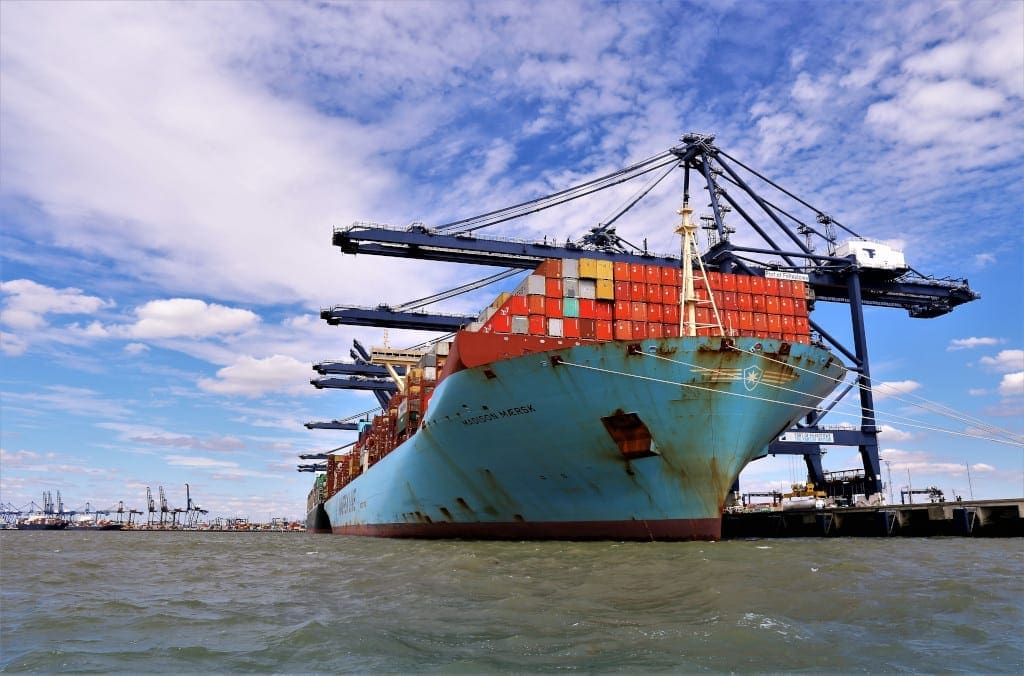
Many who pass through Harwich today will miss the attractive old town the Virgin Queen so admired because their destination is the Harwich International Port a few miles upriver, the second busiest freight and passenger port in the country and home to regular Stena Line ferry services from Harwich port to Hook of Holland. On the confluence of the Stour and Orwell estuaries, Harwich is the finest and safest harbour between the Thames and the Humber.
But if you can find your way down to Harwich Quay, you’ll discover one of the best-kept secrets of East Anglia, a superbly well-preserved old town with a rich array of historical buildings and artefacts. Indeed, if Elizabeth I were to return in a time capsule today, there would be enough narrow streets, inns, and nooks and crannies to make her feel little had changed.
The Pier Hotel Harwich, Steeped in Tradition
For our visit we picked accommodation dating back to the reign of Britain’s second great Queen.
The Pier Hotel Harwich on The Quayside opened in 1864 to take advantage of the influx of travellers following the arrival of the Great Eastern Railway line at Harwich. The hotel then benefitted additionally when GER started to provide steamship travel to the continent.
The Pier was built – as was common in the early Victorian years – in the style of a Venetian palazzo, in striking white stucco and blue paintwork with arched windows and wrought-iron balconies: an octagonal lantern was added to the roof a few years later.
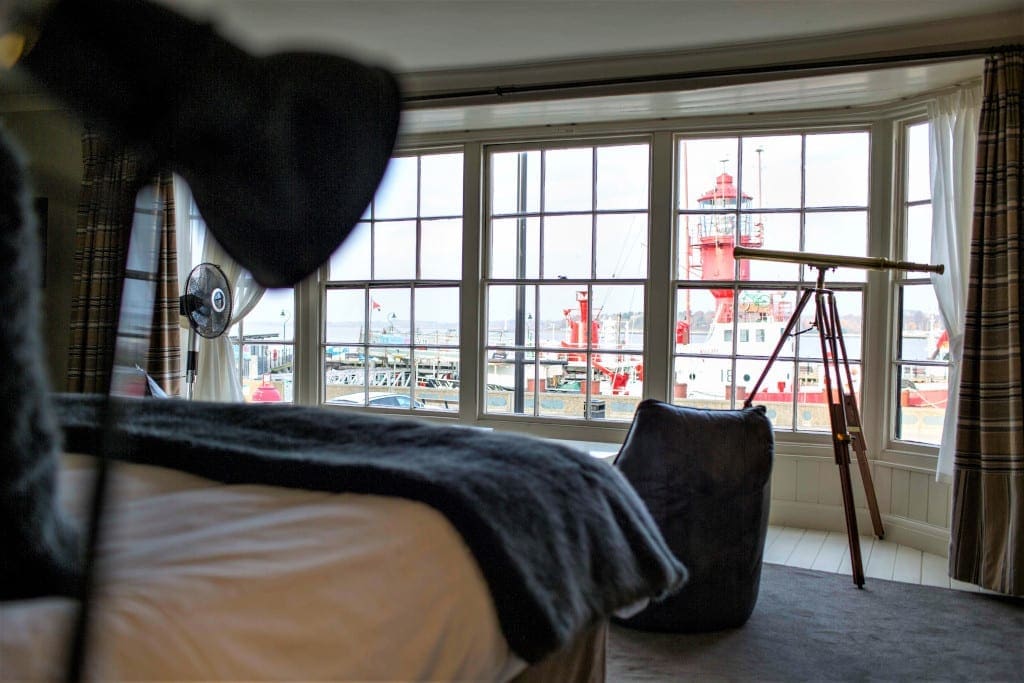
Then after a century or so as a ‘Family and Commercial Hotel’, entrepreneur Gerald Milsom – who already owned the luxury Maison Talbooth hotel in Dedham – bought The Harwich Pier and transformed it into a boutique establishment, keeping the Victorian feel but blending it with cool, contemporary touches. He then acquired the Dickensian looking Angel Inn (1824) next door, turning that building into a stylish seven-bedroomed annex to the main hotel.
Radio Caroline and the Boat that Rocked
We stayed in the Angel annex, in the spacious Mayflower Suite at the front, with glorious views from a wide bay window out over the quirky Ha’penny Pier and to the harbour beyond. The room’s permanent telescope helped us view the colourful display of commercial and pleasure boats, but we didn’t need it for the vessel moored right in front of our window – the splendidly maintained, deep red, light vessel LV18, formerly a protector of local seafarers but best known for taking the part of Radio Caroline in Richard Curtis’s movie The Boat That Rocked, starring Bill Nighy, Kenneth Branagh and the late Philip Seymour Hoffman.
The Pier Hotel Harwich pays homage to the town’s maritime past, with nautical motifs all around and evocative posters from the 1950s advertising the Hook of Holland ferry lining the walls. But its downstairs Navyard bar connects with the Europe of the present across the North Sea, with a Scandinavian-style menu of smørrebrød open sandwiches, plus a remarkable 140-strong ‘Gin Library’.
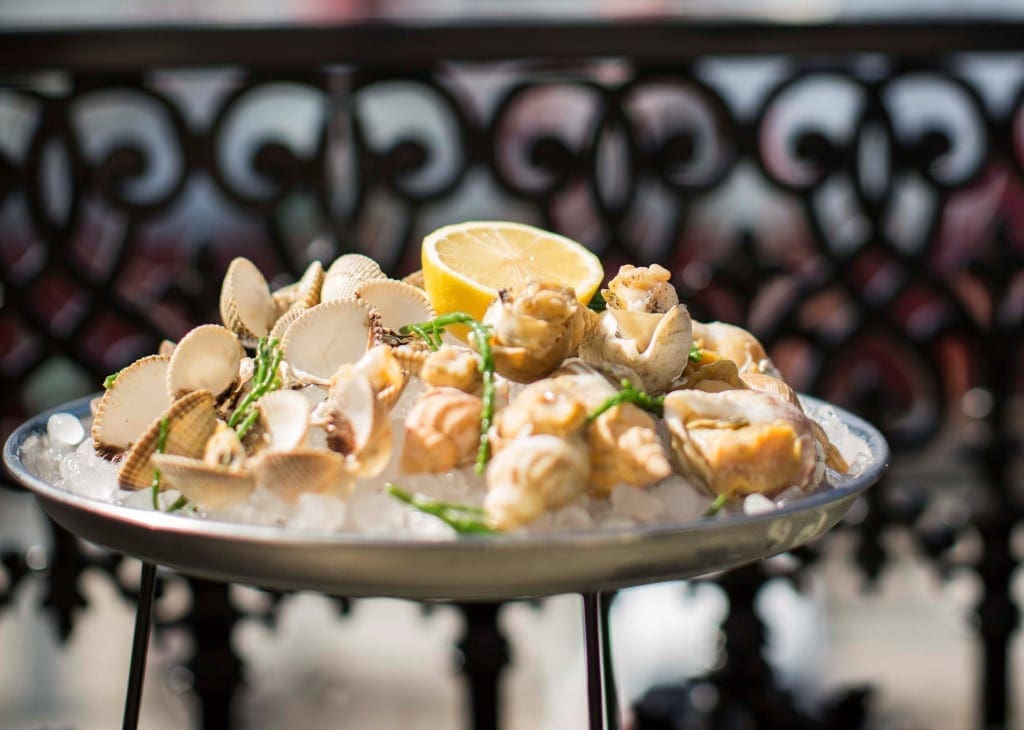
The restaurant upstairs, with floor to ceiling windows, commands wonderful views out to sea from all tables, and its elegant balcony is the place to be on a warm evening. It’s brasserie style, with the accent on fresh seafood: our cod and chips proved an excellent, hearty choice after an afternoon of walking. All in all the hotel, with the benefit of good-humoured, attentive staff, produces a thoroughly relaxed, enjoyable environment.
It would have been easy to linger in the Mayflower Suite, sinking down into the comfortable chairs, reading a good book whilst occasionally glancing at the magnificent vista in front of us. But we had a rendezvous with Colin Farnell, chairman of the vibrant Harwich Society, who was our guide on a heritage walking tour of the old town.
Harwich : A Naval Tradition
Its colourful maritime history is clearly what sets Harwich apart, and there was early evidence of that just a few yards from our front door at the Navyard Wharf, where a big board recorded the Men-of-War ships built here between 1660 and 1827. Some of the biggest and heavily armed listed date back to the fearsome Anglo-Dutch wars of the late 17th century – the Albermarle and the Sandwich, 1378 and 1406 tonnes respectively, both carried 90 guns. Also displayed at this site is a splendidly preserved brass shipyard bell – used to summon men to work – ordered by the Board of Admiralty in 1664.
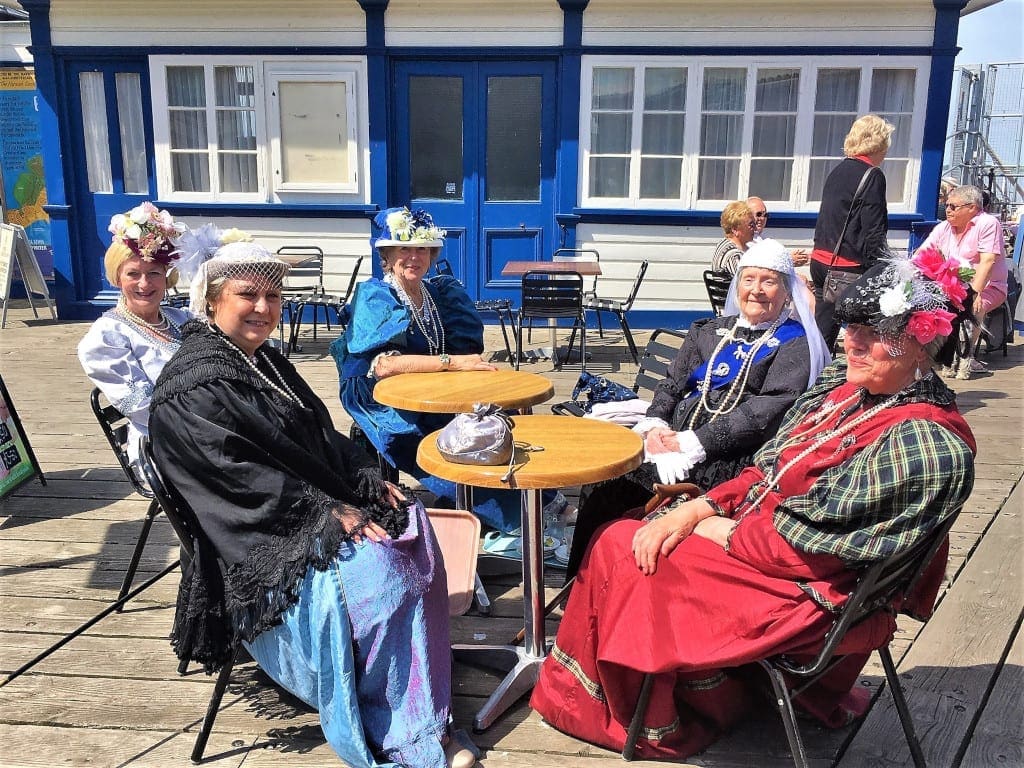
Mention of the Board of Admiralty leads us to one of many remarkable characters who had connections to this town. When he wasn’t writing his detailed and often scandalous diaries Samuel Pepys was working as First Secretary of the Admiralty (including responsibility for Harwich port), eventually becoming MP for the town in 1679.
Harwich was a ‘rotten borough’ in those days so Pepys had no need to campaign for votes. When he spent time in the town it was with his good friend and fellow MP Sir Anthony Deane, Master of the Harwich shipyard. A pub in Church Street carries the great diarist’s name and one suspects there is more to be discovered about Master Pepys’ links with Harwich.
It is surprising that Harwich port escaped largely unscathed from the two world wars. In World War II, the Axis powers designated it a secondary target only and the Italian air force, the Regia Aeronautica, rather than the Luftwaffe, were tasked with bombing it. They largely failed but did manage to destroy a few houses in Harwich town centre, their modern replacements today looking somewhat out of place among the nicely preserved 16th, 17th and 18th houses.
Surrendered U-boats and the Mayflower
One of the impressive aspects of this town is how those who promote its historical legacy work hard, and inventively, to find new ways of telling old stories. The famous surrender of the whole of the German U-boat fleet and their crew at Harwich at the end of World War I is a case in point.
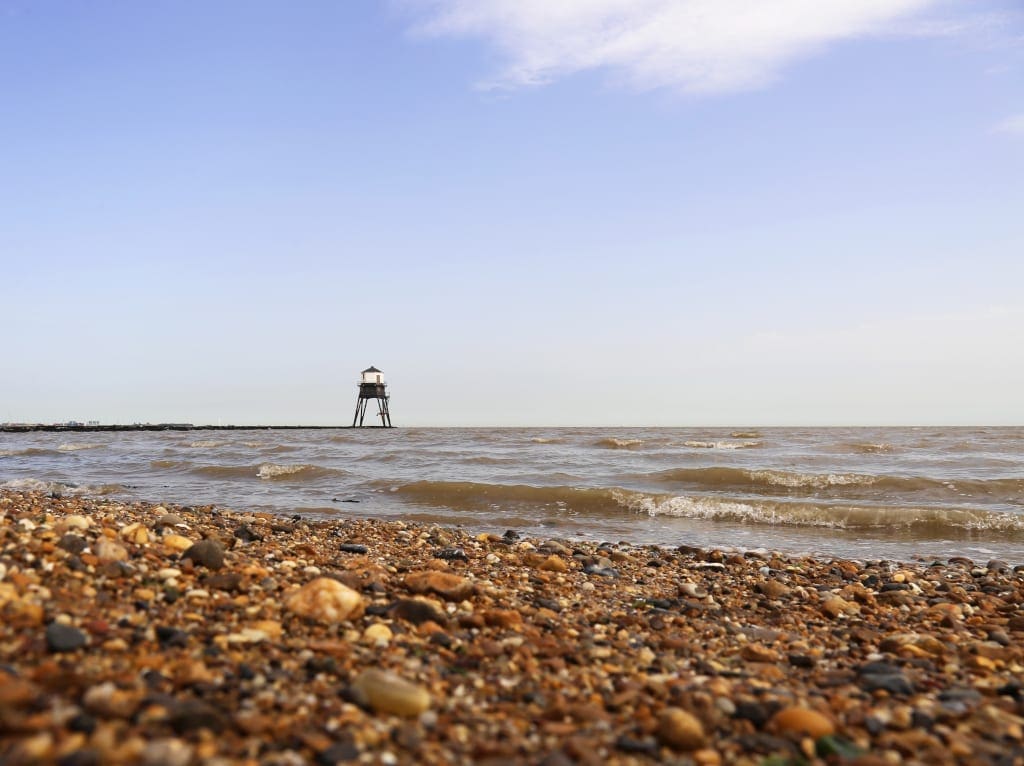
It happened on 20 November 1918, nine days after the general armistice. The town’s residents witnessed the astonishing sight of a two-mile queue of 168 enemy submarines, travelling three abreast with flags of surrender, slowly snaking their way into Harwich harbour. The captured sailors were sent home but their boats were distributed all around Britain – with some remaining around the estuary at Harwich to rust.
As we walked with Colin along the harbour front, we could see the superb, 49-foot willow model of a U-boat that sits in the exact spot where the German submarines surrendered. This biodegradable sculpture was weaved by local artist Deb Hart for the centenary celebrations of the end of the war last year, and there it will remain – probably for a couple of years – before it finally breaks up and fades naturally into the sea.
But in terms of retelling old stories, nothing is more important to Harwich at the moment than promoting the town’s connection with the Mayflower, the ship that played a central role in the ‘founding of America’ by transporting the rebel Puritans, the Pilgrim Fathers, to their colony in Cape Cod in the ‘New World’ in 1620.
The Mayflower, a three-masted armed ship only 100 feet long and 25 feet at her widest, carried 102 passengers plus a crew of 30 across the North Atlantic in often stormy weather. Documentation is scarce, but it is generally acknowledged that the ship was built in Harwich. What is known for sure is that its part-owner and master, Christopher Jones, lived, worked and married in the town. And the ship’s cooper and the first pilgrim to set foot on American soil was John Arden, widely believed to have originated from Harwich.
So a sense of anticipation is rising as Harwich prepares to step onto the world stage with a key part in next year’s ‘Mayflower 400’ celebrations. The word will be abroad about Harwich’s vital role in the story of the ‘New World’ as soon as October, when Captain Jones’s old house at 21 King’s Head Street opens as a temporary, 18-month museum.

Our host had just been given the keys to the house and took us inside for a sneak preview. Captain Jones lived here with his mother Sybil and father, also Christopher – while his first wife, Sara Twitt, unusually lived in the house opposite, which is now the lively Alma Inn.
The house, which dates back to 1475, is being sympathetically restored by its present owner, who is keen to uncover as much of its original features as possible. Trapped doors, hidden cupboards, and fascinating wall carvings have been uncovered. In the kitchen, we caught a tantalising glimpse of a mural in which a cherubic looking character is holding over his shoulder what looks like the carcass of an animal.
You can imagine Captain Jones walking out of his front door, turning left and striding fifty yards or so to the harbour front to assume command of a ship – the Mayflower, for sure, for one – waiting to take him on a commercial voyage across the North Sea.
Harwich certainly stirs the imagination. We explored further naval history at the Low Lighthouse (now the main maritime museum) and the Lifeboat Museum, and marvelled at the unique 17th century Treadwheel Crane, worked by two men walking in the interior of its two wheels.
Seal Spotting in Harwich
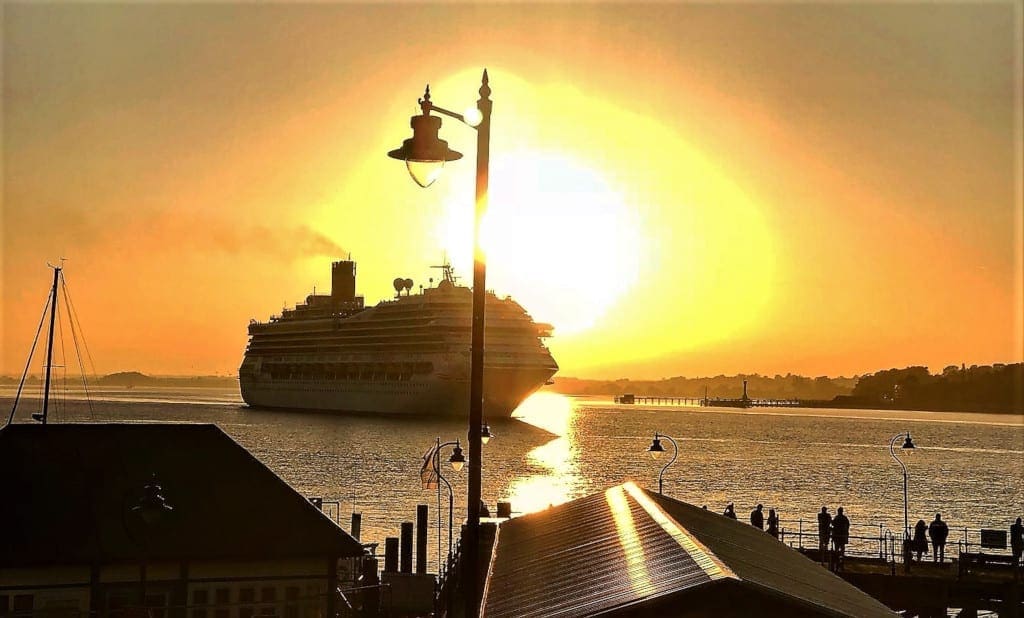
But the essence of Harwich’s character comes from its relationship to the water, so we needed to get out and smell the sea breeze before we left. We chose to go seal spotting at nearby Hamford Water, a National Nature Reserve and a hugely important wetland for birds – as well as being the inspiration for Arthur Ransome’s much loved children’s book Secret Water.
We were the only passengers on board the Seal Spotter on a glorious day. Our friendly, knowledgeable guide and skipper Mick Smith coasted the boat skilfully around the tidal creeks, and – with the aid of the binoculars – we were able to get a close look at these marvelous creatures.
A good number of the colony – sixty or seventy – of harbour and grey seals appeared to be out to greet us, lolling on the mudbanks and only releasing the occasional, apparently contented, roar. There are now over 250 seals in the whole of the Walton backwaters, such an encouraging figure as there were just five back in 1986.
Back safely at Ha’penny Pier, and it was time to wend our way home. We live at the far end of Suffolk, and it had been a revelation to discover such a fascinating town just an hour’s drive away. Rest assured, you will be hearing much more of Harwich in the coming year.
Things to Do in Harwich Photo Gallery
Getting to Harwich
What better way to travel than by train. The average travel time from Harwich to London is 1 hour 34 minutes. Tickets from as little as £10, can be bought here.
Harwich Ferry Times
You can also use Harwich as your gateway to the Continent. Ferries run from Harwich port to the Hook of Holland and vice versa 363 days a year. Details of Harwich ferry times can be found here.
Harwich Hotels
Rooms at The Pier Hotel Harwich are from £110.
Things to Do in Harwich
With so many things to do in Harwich, it might be best to book yourself a town tour. The Harwich Society offers free guided tours including Captain Jones’ House, the town’s lighthouses and Harwich Redoubt Fort. Seal watching tours can be booked here.
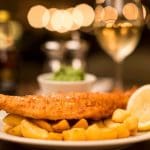
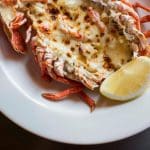
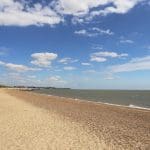
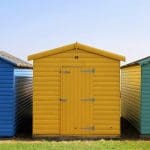
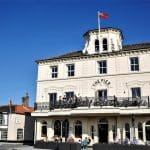
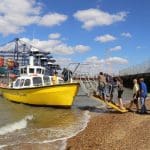
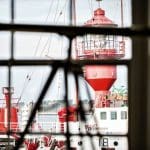
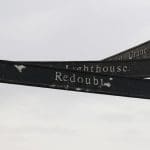
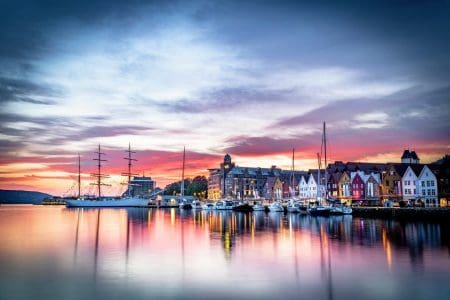
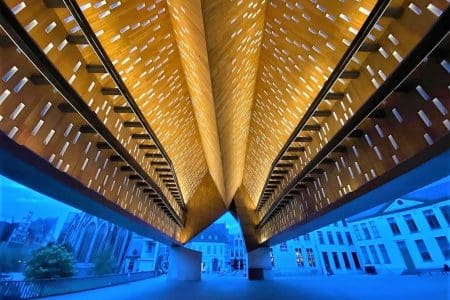


I was your skipper on seal spotter just came across this many thanks for the nice words your welcome back any time
thanks for that. I know that Eileen and Roger really enjoyed the trip.